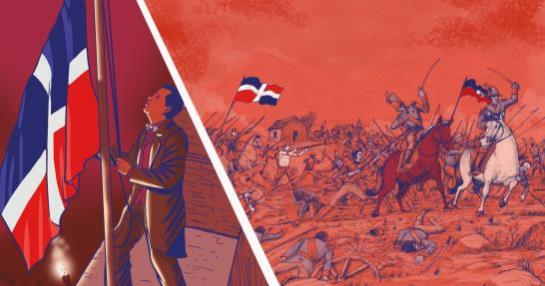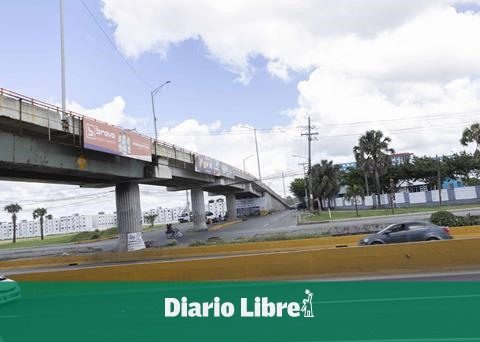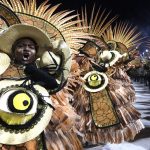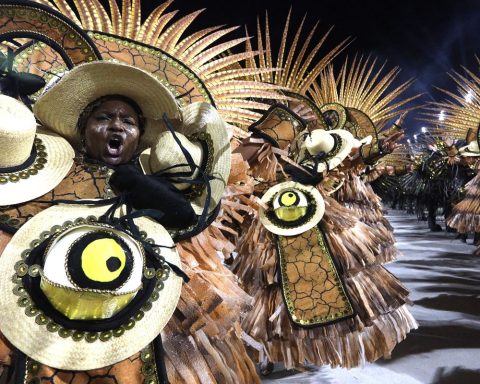When it was declared independence Dominican from Haiti On February 27, 1844, the Dominicans inherited from the Haitians disorderly finances, precarious trade, and non-existent industry. There was hardly any incipient agriculture that was promoted by the government led by Jean-Pierre Boyer.
The First Republic it was built on a weak financial foundation in a time of war, and the Dominican economy did not improve substantially in the years to come.
“When the Haitians were expelled from the country in March 1844, they barely left in the boxes of the Public treasure in the cities of Santo Domingo and Puerto Plata, the sums of $6,068.64 strong pesos and $5,093.77 pesos in national currency, which were barely enough to cover the first troop movements in March 1844”, Dominican historian Frank Moya Pons reports in the document “Data on the Dominican economy during the First Republic”.
He adds that in a few days the Dominican Government ran out of money and had to resort to local merchants, especially foreigners established in the country, and to large landowners, to obtain loans with which they could cover their current expenses.
“During this first year of independent life, the Dominican Government borrowed the sums of $12,000 strong pesos and $95,591.77 national pesos from different merchants and owners in the country,” says Moya Pons.

The loans continued during the following years, “along with the unsupported monetary issues that the Dominican government carried out to keep the State functioning and to provide the country with money,” highlights the historian.
“Both practices kept trade continuously in crisis and were the cause of several bankruptcies of the Public Treasury,” he adds.
During the first year of independent life, the currency of that time in the Dominican Republic was the Haitian currency, but it was soon replaced by a foreign currency and a Dominican currency, especially paper money. The latter was issued to remove Haitian currency from circulation “which was seen as another symbol of foreign domination.”
When Pedro Santana came to power on July 12, 1844, Moya Pons points out that the little Haitian money that had remained in circulation was in the hands of merchants and there were barely a few coins in the possession of the public.
It indicates that, in 1846, the issues made had put into circulation more than 2 million pesos without backing and the Dominican peso had already lost 90% of its value.

“The administration of the Public Treasury had been extremely deficient due to the economic ignorance of its directors, and when in March 1847, the National Congress, alarmed by the economic crisis, asked the Minister of the Treasury to account, he was unable to document the state of public accounts, which cost him a violent attack from congressmen who accused him, along with the Government, of administrative corruption”, writes Moya Pons in his text.
Two years after the independencewhen the ships arrived with cargoes from the United States, they found quick sales of flour, bread, salted meats, cod, herring, butter, cheese, bacon, soap, candles, chairs, furniture, wood, office signs, hardware and ordinary cotton goods.
The litany of articles were mentioned in 1846 by United States Navy Lieutenant David Porter, special envoy of the president of his country to study “the social, industrial and political conditions of the Dominican Republic,” according to Moya Pons.
At that time, 20 paper pesos were equivalent to one silver dollar, according to the exchange description made by Porter, who also complained about the lack of official statistical information that was available at that time.
“Dominican finances were always the weak side of the economy of the First Republic, even in periods in which production and exports maintained acceptable levels within the time”Dominican historian
Moya mentions that, according to Porter, “what little money there was in the country was in the hands of Jews,” who dedicated themselves to trade, especially export.
“Whenever the government wanted to pay its debts, it increased the price of copper coins,” he stresses. Immediately afterwards, the value of copper fell again and that of paper money rose. Speculators who knew about the Treasury’s secrets made money from both operations, but the mass of the people always suffered. Everywhere was evidence of the abject misery to which the people were reduced; his once flourishing trade had been reduced to nothing; education was a farce; and even the rites of their religion had fallen into neglect.”
He adds that the duties on imports from Santo Domingo for 1845 were 106,880 and two-thirds of the imports were from the United States. And public spending, for the same time, in that same jurisdiction, was 130,027 Spanish dollars, being 30 thousand more than the income of that province.
“Dominican finances were always the weak side of the economy of the First Republiceven in the periods in which production and exports maintained acceptable levels within the time”, writes Moya Pons.
He adds that 1844 was a bad year for the country economically. The Haitian invasions and the threat of a new domination motivated the merchants to stop importing and the export was paralyzed. Only 30,000 quintals of tobacco were exported that year for $46,000 strong pesos.
“It was necessary for the merchants to realize that at the moment the independence The Dominican Republic had been consolidated under the leadership of President Santana, so that economic activity began to recover little by little”, says the historian.
The export of mahogany was constituted with “the soul and nerve” of the economic life of the Dominican capital and the South region. Its main consumer was England, from where it was distributed to English furniture factories, workshops and cabinetmakers. Due to its high exploitation, it would end up running out in a few years.
In the North of the country, especially in the Cibao, tobacco was grown, and it was the base of the economy of that region. In the South and East, the two main products were wood and cattle, and exploitation was the main activity of the inhabitants of the area. Moya Pons points out that the written records of the time refer to this regional specialization of local production.
It indicates that, as the Dominicans were involved in defending their homeland from the constant Haitian invasions and military incursions, the war tended to keep the men busy, so the agricultural labor force that could revitalize the sector was scarce.
For this reason, he highlights, regional agriculture was mostly subsistence to support families, and did not generate a substantial increase in exports.
Agricultural technology was limited to the machete and the coa as instruments, and adaptation to the environment was empirical.
“Of the main products exported in the years 1845, 1846 and 1847 through the ports of Santo Domingo and Puerto Plata, which were the main ones, tobacco exported for millions of pounds through Puerto Plata, and mahogany and other wood exported by millions of feet through the port of Santo Domingo”, writes Moya Pons when citing data from the time.
And he clarifies: “These products were really the basis of Dominican economic life during those years, but they were not, and this is clear, the only products that kept the population economically active in the country at that time.”
The historian mentions that in addition to tobacco, mahogany, gauyacán and palo de campeche, the Dominicans also produced and exported cigars, guayacán resin, beef and goat leather, honey and wax, starch, coconuts, shells of tortoiseshell, sugar and provisions, although the value of all these products together was less than that of mahogany or tobacco separately.
“With the money received from the export of these products, the Dominicans bought in the first years of the Republic the few manufactures they needed, accustomed as they were, after centuries of poverty, to a scarce and sober consumption oriented to the satisfaction of their needs. most essential needs.
In Santo Domingo flour, fabrics, liquors and hardware were imported from the United States, France, Saint Thonas and Curaçao. Moya Pons also observes that the city was also dominated “by a minority of foreign merchants who were dedicated to export and import, the most important of them being Jews, Spaniards and Germans.”
“These foreign merchants were the channels of Dominican foreign trade and were among the few individuals who had sufficient capital at all times to face all eventualities, including the insistent demands for credit by the Government, which was always short of funds. ”, writes Moya Pons.
He adds that these foreign merchants were the guarantors and financiers of the small retail merchants, all of whom were Dominican, because the law did not allow foreigners to deal with retail trade in the country.
“In 15 years, that is, from 1844 to 1859, the structure of the economy did not change in the slightest”Dominican historian
Foreigners were also in Puerto Plata, where the trade was mostly in the hands of Germans, who were representatives of labor importing houses in Germany and Holland. Also, there were Jews who represented firms from Curaçao or Saint Thomas.
Already in the interior of the country, trade was mostly in the hands of Dominicans and was very slow, with the exception of those in Santiago.
“In 15 years, that is, from 1844 to 1859, the structure of the economy did not change in the least,” says Moya Pons. “The variations that occurred throughout this first period of our national history were more quantitative than qualitative.”
It explains that the quantities exported or imported and the number of articles or products imported or exported varied. “But the Cibao continued to produce tobacco, each time in larger quantities, although there was a slight export crisis in 1851, due to the Crimean War, which weakened our market in Germany,” Moya Pons points out.
The South continued to export wood, each time in greater quantity, until the cuts became too far from the mouth of the rivers and its transport became more and more expensive, which made it necessary to intensify this type of exploitation in the North and in the Northeast. However, the people were still mostly engaged in ranching at the end of 1851.















